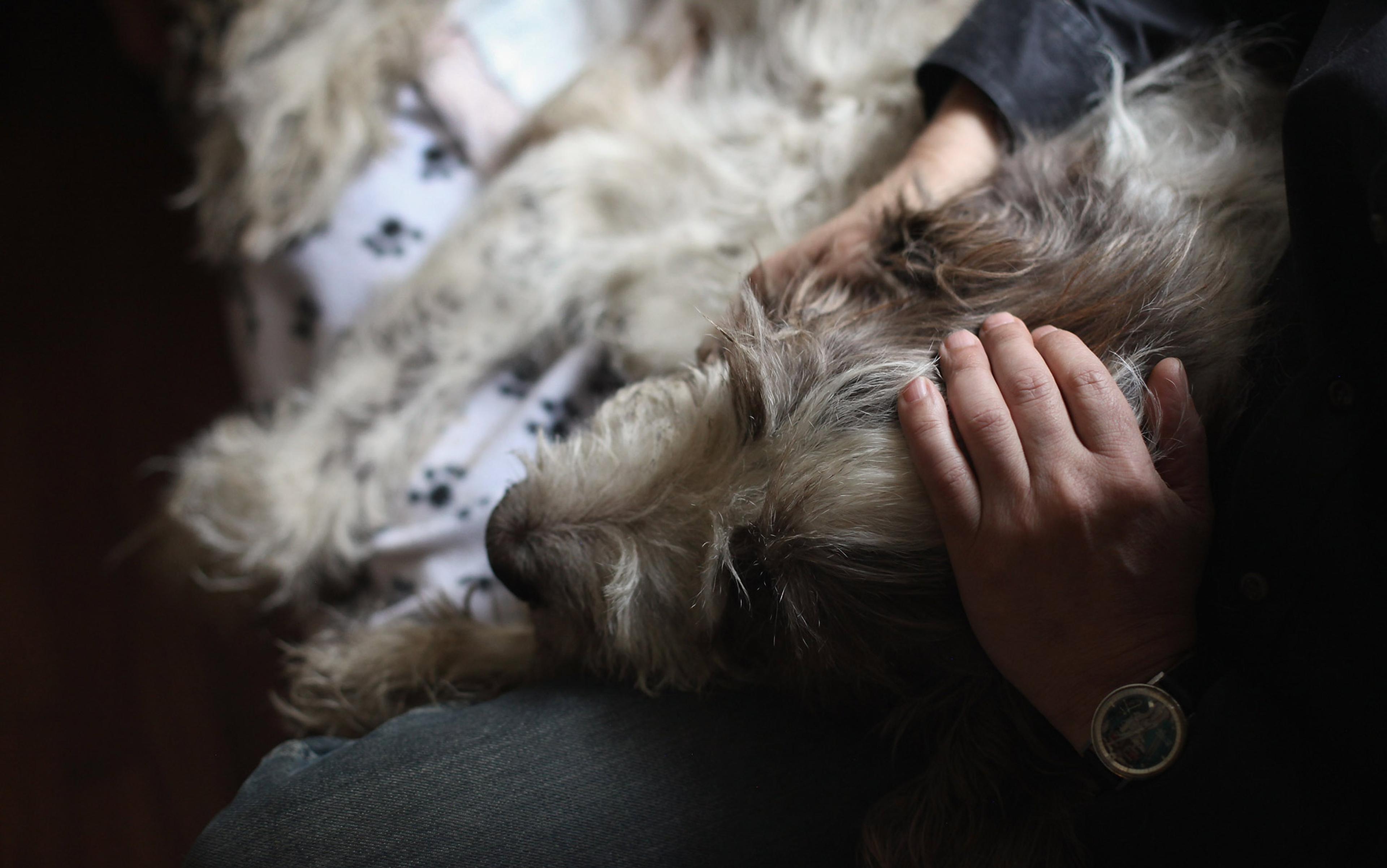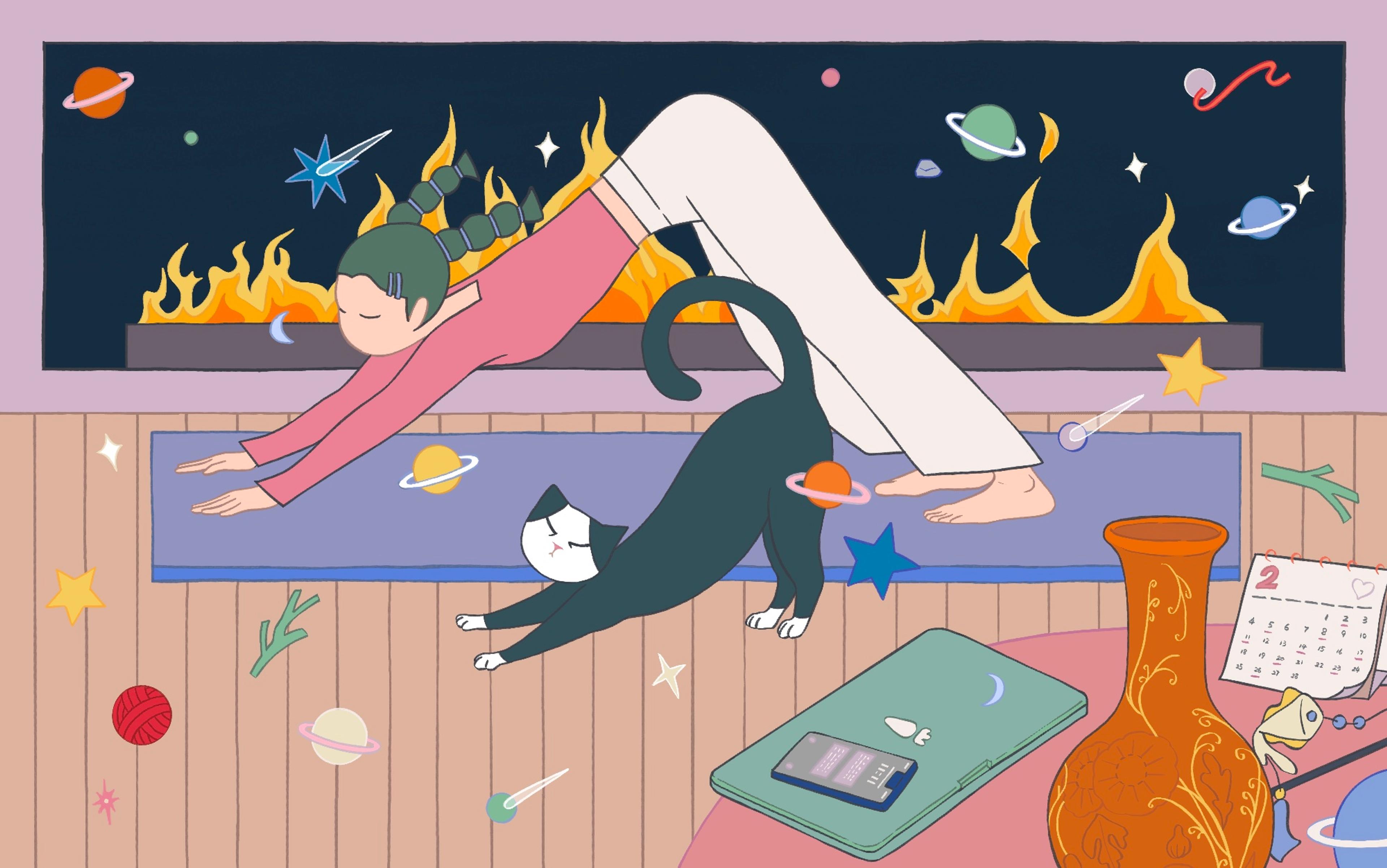I killed my dog last year. Mika was a shelter mutt, so she was around 10 or 12 years old; I can’t be sure. Twelve dog years would have put her at around 80 human years, which is a pretty good run. But what’s strange about having a dog is how quickly they age relative to us – they start out younger than we are, catch up for a time, and then pass us by, declining into their twilight years, all in the space of a decade or so. As witnesses to that accelerated timeline, having a pet means that we often end up experiencing their eventual demise and learning something about death in the process.
Mika was a great dog. Obviously abused before ending up at the shelter, she had scars on her head when I rescued her and, whenever I took a broom or rake in my hand, she would cower in fear. She was easily overwhelmed when other dogs came up to sniff her, and would often growl defensively. But with time she grew to be less apprehensive and almost pathologically affectionate, if there is such a thing with animals, demanding to be petted by anyone who happened to be near. She was a great companion watching TV on the couch during my single years, and she helped me win the attention of the woman, a veterinarian, who would eventually become my wife. In fact, my wife has often joked – and maybe it isn’t a joke at all – that she would never have gone out with me in the first place if I hadn’t had a dog.
For whatever reason, the way I’d always pictured the proper death of one’s dog was like a scene taken from the 1957 Disney film Old Yeller (1957): after years of steadfast companionship, when man’s best friend no longer derives joy from chasing rabbits and can barely lift his head, his owner has to muster the resolve to get out the rifle to put him out of his misery. Although an oddly bucolic fantasy for someone living in Los Angeles, at least part of it was no doubt influenced by how I’d learned to think about death as a physician.
In human medicine, we’re used to implementing any and every life-saving intervention right up to the very end. As a medical intern 20 years ago, I remember thinking about the futility of that approach with patients in pain and suffering from multisystem organ failure, sustained only by machines and a regimen of some 30 or 40 medications, and unlikely to ever make it out of the hospital. What was the point? Whatever happened to quality of life? But those reservations be damned, we never gave up, and among the interns who transferred care to each other from shift to shift, the dictum of patients ‘not dying on my watch’ was something to which we all held fast.
As long as there were no ‘Do Not Resuscitate’ orders in the chart asking us to withhold ‘heroic efforts’, we rarely considered doing anything less to prolong life, and financial cost was never part of the equation either. As far as hastening death, that was never even mentioned. After all, the original Hippocratic oath states: ‘I will neither give a deadly drug to anybody if asked for it, nor will I make a suggestion to this effect.’
When Mika, who’d had hip dysplasia from the start, developed increasing difficulties walking and was in obvious pain much of the time, my wife and I put her on medications and even tried acupuncture, which helped for a while. But one day, at the start of our morning walk, she ambled to the end of the driveway, sat down, and refused to go on despite me pulling the leash. It was the same the next day and the next, so I stopped trying. It was at that point that my wife first brought up the possibility of putting her down, but that seemed ridiculous to me because between Old Yeller and my experiences as a human doctor, I envisioned Mika struggling through the pain, fighting for her last breath to the very end. In other words, it didn’t seem right to think about letting her go because she hadn’t yet suffered enough.
As a veterinarian, my wife viewed things altogether differently. To her, putting our dog to sleep didn’t represent throwing in the towel as it seemed to me, but a compassionate way to preempt unnecessary but inevitable pain and suffering down the line. As she saw it, we owe this option to our pets as stewards of their care, especially given that animals can’t understand pain or decide for themselves just how much suffering they are willing to tolerate.
My wife would come home from a long day at work and say: ‘I killed my patient today’
Indeed, the American Veterinary Medical Association Guidelines for the Euthanasia of Animals (2013) acknowledges that ‘there is no consensus on when it is appropriate to let [a] life go’, but notes that: ‘Euthanasia may be considered to be the right course to spare [an] animal from what is to come … if medical intervention would only prolong a terminal condition, or if current health conditions cannot be successfully mitigated.’
When we were dating in the years before we got married, my wife would often come home from a long day at work and say: ‘I killed my patient today.’ This, I came to understand, was a kind of self-reproachful statement of defeat as well as a starkly factual statement that reflected how she’d actually administered the medications that ended a dog or cat’s life that day, typically with tearful owners and their bawling children huddled around.
This strange admixture of guilt from failing to save a life, along with the resolve to be the agent that takes it, comes with the territory in a veterinary clinic where euthanasia is a daily occurrence. Although euthanasia literally means ‘good death’, it was totally foreign to me in my training as a physician. Human doctors might feel guilty losing a patient in the end, but that guilt is almost always tempered by the reassurance that while we might have lost the battle to cancer, nature, God or whatever, we did everything we could in the process. Being a physician means that doctors must sometimes admit defeat, but in doing so, we don’t go on to be the hand of death.
As time went on, medications and acupuncture had less of an impact on Mika, and her hind legs would often give out so that she would walk only a limited distance before collapsing. She seemed to be slipping cognitively too, and one day even fell into the swimming pool while we were away at work, requiring rescue from a neighbour. In what seemed like a short amount of time, her muzzle turned fully grey, and she would often sigh heavily with a distant look in her eye. Finally, she began to lose control of her bowels, with increasingly frequent accidents around the house.
And so, discussions about euthanasia became more about ‘when’ than ‘whether’.
The difference in attitudes towards euthanasia for animals and human beings is understandable. After all, people have been killing animals without remorse for food, to avoid becoming food ourselves, and for sport long before we began domesticating animals or keeping them for companionship. Whereas traditional Judeo-Christian and Islamic teachings include strong proscriptions against murder and suicide for humans, religious doctrine questions the animal soul. And while euthanasia is used as an ethical means to preempt suffering in veterinary medicine, it’s not unusual for some owners to simply abandon their pets by the side of the road, put puppies in garbage bags, or refuse to pay for life-saving medical procedures based on both economics and expediency. No wonder the expression ‘die like a dog’ has historically referred to the most miserable of ends.
Although ‘death with dignity’ is supported in many parts of the world, often no one wants to ‘push the plunger’
In 2009, US legislation that would have allowed physicians to be compensated by Medicare for providing voluntary counselling to patients about options for end-of-life care was defeated due to political uproar over ‘death panels’. And yet, as I discuss in the World Journal of Psychiatry in 2015, human euthanasia is being increasingly considered and sanctioned both in the US and abroad. As life-extending medical advances over the past 50 years have fuelled growing concerns about prolongation of suffering and loss of autonomy, the euthanasia movement of the 1930s has gained momentum, evolving into the modern ‘right to die’ and ‘death with dignity’ movements that challenge us to consider what constitutes a ‘good death’. Today, some form of voluntary active euthanasia – death by administration of a lethal dose of medication to avoid pain and suffering – is legal in several states in the US, as well as in Japan and parts of Europe including Belgium, Luxembourg, Switzerland and the Netherlands.
Still, if the historical divide between our attitudes towards euthanasia for humans and for animals is narrowing, the devil in the details of cultural sanctioning involves who can actually administer, or is willing to administer, the medications that end life. With existing legislation to date, the sanctioned individual – whether a physician, family member, some neutral third party, or the person seeking to end their own life themselves – varies by jurisdiction. Although ‘death with dignity’ is increasingly supported in many parts of the world, often neither doctors nor patients seeking death want to ‘push the plunger’ and take responsibility for being the hand of death. In this sense, euthanasia remains a hot-potato issue in human medicine.
Consequently, we now find ourselves debating a range of possible end-of-life care options, including passive euthanasia (withholding life-sustaining interventions including food or water), physician-assisted suicide (providing the means for a patient to end their own life), and active voluntary euthanasia (administering a lethal medication to a patient). Palliative sedation is an increasingly popular option within medicine, which involves administering medications that are intended to relieve suffering through sedation and pain control to the point of possible unconsciousness. Although death is a potential side effect, palliative sedation avoids the moral objections of suicide and euthanasia through the ethics of the so-called ‘double effect’, which argues that death is an acceptable outcome if unintended and in the primary service of relieving suffering among the terminally ill. Pushing the envelope of what it means to die a ‘good death’ for humans even further, my colleagues at the University of California, Los Angeles have been investigating the use of psychedelic drugs such as psilocybin to relieve anxiety and depressive symptoms and to find meaning at life’s end.
After hemming and hawing for weeks, my wife and I finally decided to pick a date to have Mika put down. We asked a veterinarian friend to perform the euthanasia in our home. On the agreed day, it was my wife who put off making the call until I couldn’t take it any longer, and had to prod her to do so. The vet came to our house, started an intravenous line, and filled a syringe with Euthasol as we sat on the floor by Mika’s bedside, petting her with long strokes and saying our tearful goodbyes.
When we were ready, I asked if I could push the plunger, and the vet allowed me to place my hand with hers as we did it together. I was worried that Mika might show signs of discomfort, but seconds after the medication went in, she simply took a single, long, deep breath, and then let it out slowly for the last time.
‘Good dog,’ I told her. ‘Good dog.’
It was a good death. We should be so lucky.






